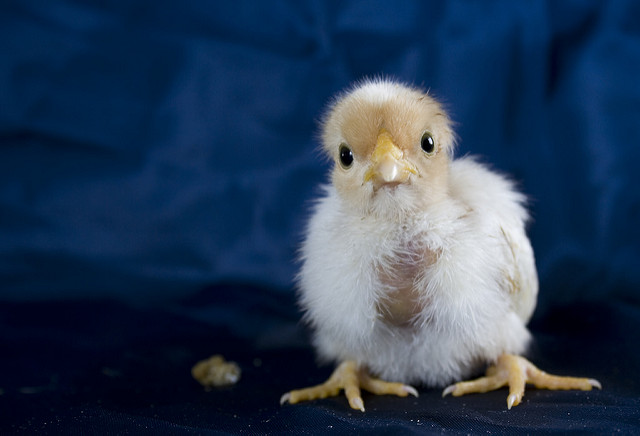
The longer I practice medicine, the more I realize the old adage is true—we really are what we eat.
And, when it comes to eating meat and poultry, we’re also what the animal we ate, ate.
There’s a barrage of information out there about how animal proteins, such as chicken and beef, are raised. And, quite frankly, it’s tough to decipher what it all means.
What’s on our grocery shelves?
For instance, when we go to the market, we might read any number of labels with the following words on them: grass-fed, pasture-raised, free-range,100 percent natural, organic, farm-fresh, or cage-free.
But really, the only labels that matter are the ones that read “pasture-raised” and “100 percent grass-fed.” When buying poultry products pasture-raised works great. But, if we’re in the market for meat, make sure the product has both labels.
Why?
It turns out, when we consume animal products, the nutrients in the plants the animal ate pass into our bodies and become assimilated into all of our cells as well.
So, it’s important to know how the food we eat was farmed and raised—not just because there are more humane ways of doing things—but also because it directly affects our health.
First and foremost, the lectins in the grain, corn, and soy products fed to conventionally raised animals ends up in their flesh, milk, or eggs. And the next stop is, of course, our guts.
Lectins
Lectins are harmful plant proteins—they’re a plant’s only defense against a hungry animal. But, many are toxic. So, when we eat an animal protein and the animal has been made sick from lectins, we’re not off the hook either. Unfortunately, the consequences can be extremely painful or uncomfortable.
The crazy thing is, animal feed can consist of lectin-filled grains and other terrible “foods”—like packaged candies or even processed, sugary rainbow sprinkles, believe it or not. But, I’m afraid there aren’t any “sprinkle-fed” labels at the butcher’s counter in the market.
So, what’s the actual difference between pasture-raised and free-range?
For starters, let’s stick to poultry to keep things simple.
Free-range
There are different industry standards for different animals, but in the case of hens, for example, according to the USDA, the definition for free range is that birds are required to have “access to the outdoors.” That’s it.
So, the problem here is the various interpretations of the word “access.”
For instance, the birds might be able to access the outdoors by sticking just their heads through what’s known as a “pop hole.” This means they might sometimes see the outdoors, but can’t roam freely or, in some cases, at all. Though they’re labeled free range, these animals are still caged.
Moreover, there’s no minimum space requirement, so the hens might be stacked on top of one another. Furthermore—and more to the point—it doesn’t guarantee that these birds are consuming their natural diet of grasses and proteins, instead, they’re fed lectin-rich grains.
Pasture-raised
But, if the hens are pasture-raised, the farmer is required to limit his count to 1000 birds for every two and a half acres. That’s 108 square feet per bird—which is approximately 106 square feet more per bird than the shoddy free range requirement. Not to mention, with pasture-raised hens, field rotation is mandatory. This means the hens can eat fresh, living grass every day!
Also, the hens must be kept outdoors throughout the year—with safe, accessible housing should the hens need to protect themselves from predators, or shelter themselves from extreme weather.
When it comes to chicken, pasture-raised is the highest standard possible because chickens are omnivorous—they eat more than just grass. So, the grass-fed label doesn’t really apply here. Chickens enjoy feasting on grass, bugs, worms, and whatever they can forage in the dirt.
However, pasture-raised doesn’t mean the same thing when it comes to other animals.
Other meats
When dealing with other meats, pasture-raised beef can also be fed grains. Oftentimes we’ll see “grass-fed,” but that just means at some point the animal was fed grass. So, it’s important to also look for the 100 percent grass-fed label when purchasing beef.
Sometimes we’ll see “grass-fed and grain finished.” That doesn’t work either. Especially when the finishing period for a cow is weeks or months.
According to the Union of Concerned Scientists, “In the industrial system of meat production, meat animals are “finished”—prepared for slaughter—at large-scale facilities called CAFOs (confined animal feeding operations), where their mobility is restricted and they are fed a high-calorie, grain-based diet, often supplemented with antibiotics and hormones to maximize their weight gain.”
Now, these animals are raised on what’s known as factory farms, where the living conditions are appalling. On these factory farms, cattle were tricked away from their natural diets of only grass, into eating lectin-filled grains and processed feeds.
Turns out, even if the feed is organic or so-called grass-fed or free-range, those animals can still contain troublesome lectins because they, too, are fed soy and corn. It may be organic corn or soy, but it’s lectin-filled all the same.
And when it comes to beef, there’s a huge difference in a steak that came from a cow that grazed on grass and a steak made from an animal raised in a stockyard.
It starts with the difference in the ratio of omega-3 to omega-6 fats.
Omega-6 fats are usually inflammatory and omega-3 fats are usually anti-inflammatory. Stockyard feed—corn and soy—contains primarily omega-6 fats, while grass is high in omega-3 fats. But, there’s more to it. That same soy and grain makes cows much fatter than the equivalent number of calories in grass does. (4) And, it has the same effect on us when we eat that beef.
There’s also a larger health concern…
When it comes to looking at how human health is affected by eating non-pastured meats, a big concern is the sickening hygiene and safety record of industrial farming. In many cases, runoff from the contaminated manure floods into rivers and streams, thereby causing outbreaks of E. coli and other diseases.
It’s just not good for us.
The takeaway
The harsh reality is that most American farmland has become overshadowed by this dangerous wave of industrial agriculture—the often inhumane, chemically-intensive method of raising food in gigantic animal production facilities impacts our public health in big ways.
We have to do our best to buy produce labeled pasture-raised and 100 percent grass-fed. Then, and only then, will we be able to give our bodies the proper nutrients and healthy food we need. And, we can rest assured we’re supporting the ethical and cruelty-free treatment of animals.
For more about lectin-free eating, check out my YouTube channel. Let me know your thoughts below about free-range versus grass-fed meat and poultry.
~
Sources
1. A Study On The Causes For The Elevated N-3 Fatty Acids In Cows’ Milk Of Alpine Origin. Leiber F, et al. Pubmed Ncbi.nlm.nih.gov. N.p., 2017.
~
~
Author: Steven Gundry
Image: Kate Brady/Flickr
Editor: Lieselle Davidson
Copy Editor: Danielle Beutell
Social Editor: Yoli Ramazzina










Read 0 comments and reply